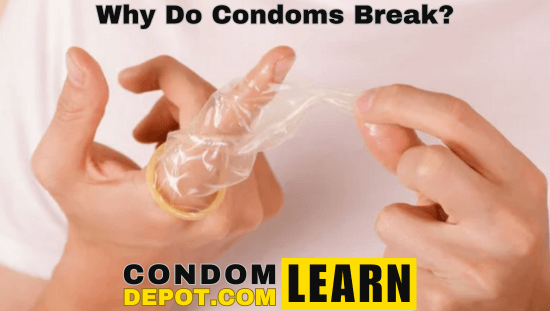Learn

Why Do Condoms Break?
You've thought about it. You've seen it in movies and WHOOPS she's pregnant. How do you avoid that happening to you or your lady? Why do condoms break?
1. The Condom Is Expired
All condoms come with an expiration date printed onto or stamped into the foil wrapper. When a condom expires, it dries out and the material it’s made of becomes brittle and weakened. This can lead to a condom tearing or ripping.
2. The Condom Is Too Small
If the condom width or length is too small, this causes the condom to be stretched beyond capacity and it becomes much more susceptible to rips and tears. If this is a problem, purchase a larger-sized condom. Consult our Condom Size Chart for a full breakdown of condom measurements by brand and learn how to properly measure a penis to get the correct condom size.
3. Improper Storage of Condoms
To maintain the structural integrity of condoms, it is vital for them to be kept in a cool, dry place away from heat and direct sunlight. Heat can damage the material in the condom and make it far more likely to break. We advise against storing condoms in in your wallet, trunk or glove compartment. The recommended climate for condom storage is room temperature.
4. Lack of Water or Silicone-Based Lubricants
If you or your partner is too dry or you are having anal sex (during which no natural moisture is being produced), it is essential to use a condom-safe personal lubricant. An absence of lubrication, in addition to the friction caused by penetration, can lead to condom breakage.
5. Oil-Based Lubricants
Using an oil-based product as a lubricant can severely damage condoms and can lead to condom breakage. This includes: massage oil, petroleum jelly, baby oil and all natural oils such as coconut and grape seed oil.
6. Using Multiple Condoms
Don't believe the myth: using more than one condom does not offer more protection. Actually, it can cause condoms to rip. Wearing more than one condom will cause friction to build up in between the two condoms, which can result in the condom tearing. This principle also applies when using both a male and female condom together. When using a male or a female condom, only one is required for protection.
7. Haphazard Opening Techniques
Try to open the condom package towards the edge or corner, not in the middle of the package. Do not use scissors, a knife, teeth, or a jagged hangnail to open a condom wrapper. These opening methods could result in a rip or tear in the condom.
Testing Your Condom Before Use
Prior to you or your partner putting on a condom, do a visual check to make sure there are no holes, rips or imperfections in the condom. An additional means of testing the condom is by administering “the water test.” This consists of filling the condom with water to see if any water leaks out. If it does, throw it away and use a new condom. Be careful not to overfill the condom with water because this could stretch it out, which could increase the risk of it breaking during sex. This testing technique will wash away the lubricant from the condom, so additional lubrication will be necessary for use following the water test.











